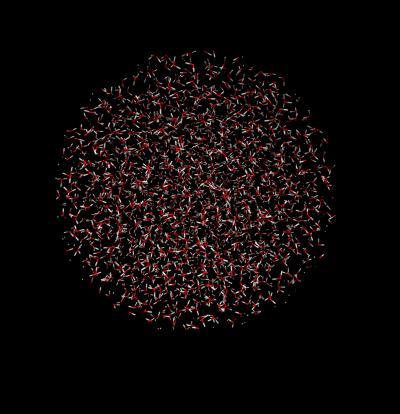Want to boil water in less than a trillionth of a second?
Now you can, if you are at the Hamburg Center for Free-Electron Laser Science and can find someone to build your theoretical concept.
Still, heating water 600 degrees Celsius in just half a picosecond seems like a fun application. If it ever does get built, it will be the fastest water-heating method on earth.
All it takes for superfast water heating is a concentrated flash of terahertz radiation - well, theoretically. Terahertz radiation consists of electromagnetic waves with a frequency between radio waves and infrared. Terahertz flashes can be generated with devices called free-electron lasers that send accelerated electrons on a well defined slalom course. The particles emit electromagnetic waves in each bend that add up to an intense laser like pulse. The terahertz pulse changes the strength of the interaction between water molecules in a very short time, which immediately start to vibrate violently.
The researchers at calculated the interaction of the terahertz flash with bulk water using the Supercomputer Center Jülich - 200,000 hours of processor time with massively parallel computing.
"We have calculated that it should be possible to heat up the liquid to about 600 degrees Celsius within just half a picosecond, obtaining a transiently hot and structureless environment still at the density of the liquid, leaving all water molecules intact," explains
explains
Deutsches Elektronen-Synchrotron (DESY)
scientist Dr. Oriol Vendrell from the Center for Free-Electron Laser Science CFEL, a cooperation of DESY, the University of Hamburg and the German Max Planck Society.

A rendering of the molecular water cloud. Credit: : Oriol Vendrell/DESY
The novel method can only heat about one nanoliter (billionth of a litre) in one go. This may sound small, but is large enough for most experiments. For comparison, ink-jet printers fire droplets that are as small as one picoliter, which is a thousand times less than a nanoliter.
"The idea is to heat-up the 'solvent' so that many molecules start the desired chemical process at the same time and then watch the reaction evolve," explains Vendrell, who worked out the super heater with co-authors Pankaj Kr. Mishra and Prof. Robin Santra, also of CFEL. Although the hot mini-cloud will fly apart in less than a millisecond (a thousandth of a second), it lasts long enough to unravel everything of interest in thermal reactions such as the combination of small organic molecules to form new substances. The team currently investigates how the intense pulse of terahertz radiation affects different types of molecules dissolved in water, from inorganic to biological systems.
The reaction progress can be probed with ultrashort X-ray flashes like they will be produced by the 3.4-kilometer-long X-ray free-electron laser European XFEL, which currently is being built between the DESY campus in Hamburg and the neighbouring town of Schenefeld. When completed, the European XFEL will be able to generate 27,000 intense X-ray laser flashes per second, which can for example be used to record the different stages of chemical reactions.
One advantage of the heating method is that the terahertz pulse can be very well synchronised with the X-ray flashes to start the experiment and then probe the reaction after a well defined time. "The transient and hot environment achieved by the terahertz pulse could have interesting properties, like a matrix to study activated chemical processes," says Vendrell. "This will be the subject of further investigations."
Angewandte Chemie. Source: Deutsches Elektronen-Synchrotron DESY






Comments